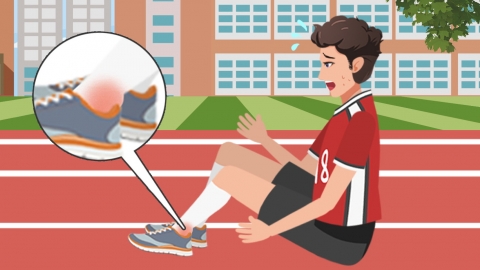How to recover from a sprained ankle
The speed of recovery from a sprained foot may be influenced by factors such as improper exercise, uneven ground, ligament tears, bone bruises or fractures, and arthritis. Usually, treatment can involve ice application, rest, compression bandaging, elevating the affected limb, medication, and physical therapy. If pain persists or swelling worsens, prompt medical attention is recommended. Detailed analysis is as follows:

1. Improper exercise: During sports activities or daily walking, incorrect posture or excessive force may cause strain to the foot muscles or ligaments, resulting in a sprain. Immediately stop the activity, rest the injured area, and apply cold compresses to reduce swelling and pain. Later, apply heat and undergo physical therapy at appropriate times to promote recovery.
2. Uneven ground: Walking or running on uneven surfaces can easily cause loss of balance and result in a sprain. Sprains caused by uneven ground are usually related to surface hardness, moisture, and individual gait. Treatment also requires rest, cold compresses, hot compresses, and physical therapy. At the same time, choose flat, dry, and safe walking environments to reduce the risk of sprains.
3. Ligament tear: Ligaments are tough fibrous tissues connecting bones. If the foot experiences strong external force, it may cause ligament tears and serious sprains. In addition to obvious pain and swelling, movement restrictions may also occur. It is recommended to apply ice immediately, rest, use compression bandages, and elevate the injured limb. When necessary, wear a brace or undergo physical therapy to promote ligament healing.
4. Bone bruise or fracture: An ankle sprain not only affects ligaments but may also damage bones, causing bone bruises or fractures. These injuries require additional healing time and may affect joint stability and function. Immediate medical attention is required, including X-ray examination to confirm the type and location of the fracture. Treatment must follow medical advice for surgical fixation, plaster immobilization, or traction, combined with rehabilitation training to promote fracture healing.
5. Arthritis: If a sprain is not treated promptly or correctly, it may lead to joint cartilage damage and subsequently trigger arthritis. Symptoms include joint pain, stiffness, and swelling, which may gradually worsen. It is recommended to take medications such as ibuprofen tablets, diacerein capsules, and celecoxib capsules under a doctor's guidance.
Additionally, strengthening foot muscle and ligament exercises can improve body coordination and balance ability, thus reducing the occurrence of sprains.









